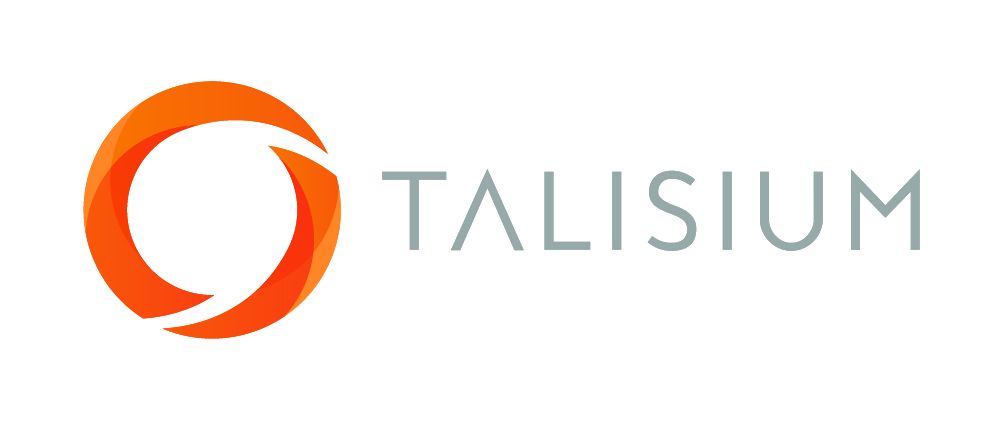5 Steps to Designing Effective Corporate Learning Programs for Healthcare Organisations
Tony Brennan

Designing effective corporate learning programs for healthcare organisations is crucial for ensuring that employees are equipped with the knowledge and skills they need to provide high-quality patient care and comply with regulations.
In this post, we will explore 5 key considerations and best practices for designing corporate learning programs for healthcare organisations.
In this post, we will explore 5 key considerations and best practices for designing corporate learning programs for healthcare organisations.
1. Conduct a needs assessment
The first step in designing a corporate learning program is to conduct a needs assessment. This can be done by surveying employees to determine their current knowledge and skills, as well as areas where they feel they need additional training. This information can then be used to design a training program that addresses the identified needs.
For example, in a healthcare organisation, employees may need training on new technologies, such as electronic health records (EHRs), or you might want to develop leadership skills amongst a particular group of doctors as part of providing opportunities for personal and professional development.
By identifying these specific needs, the training program can be tailored to ensure that employees are equipped with the knowledge and skills they need to perform their job duties effectively.
By identifying these specific needs, the training program can be tailored to ensure that employees are equipped with the knowledge and skills they need to perform their job duties effectively.
2. Tailor the training program to the specific learning styles of employees
Different employees have different learning styles, and it is important, as much as possible, to ensure the training program is tailored to the specific learning styles of your workforce. This can be done by providing a variety of training methods, such as online courses and hands-on training. Additionally, it can be beneficial to incorporate a blended learning approach, which combines different types of training methods for maximum effectiveness.
For example, some employees may prefer classroom instruction, while others may prefer online courses. By providing a variety of training methods, employees can choose the method that works best for them. Additionally, by incorporating a blended learning approach, employees can benefit from the strengths of different training methods.
3. Make the training program easily accessible
It is important to make sure that the training program is easily accessible to all employees. This is usually done by providing online training materials and making them available via a learning management system (LMS). Additionally, it is also beneficial and common to have a designated person or team responsible for coordinating the training program and providing support to employees.
Online learning makes it even more convenient if employees can access everything they need from their mobile device, anytime, anywhere.
Online learning makes it even more convenient if employees can access everything they need from their mobile device, anytime, anywhere.
4. Ensure compliance with healthcare regulations and laws
When it comes to healthcare, it is crucial to ensure that all the training is compliant with your relevant regulations, laws and guidelines applicable to your organisation.
For example, in the US, HIPAA (Health Insurance Portability and Accountability Act) compliance is a crucial aspect of healthcare, and employees must be trained on HIPAA regulations and best practices.
Additionally, OSHA (Occupational Safety and Health Administration) regulations must also be followed, and employees must be trained on these regulations as well.
Additionally, OSHA (Occupational Safety and Health Administration) regulations must also be followed, and employees must be trained on these regulations as well.
5. Evaluate the effectiveness of the training program
Finally, it is important to evaluate the effectiveness of the training program. This should be done by measuring the changes in knowledge and skills of employees before and after the training, as well as by surveying employees to gather their feedback on the training program. Simply delivering training to tick a box is not an acceptable way to ensure competence and confidence amongst your workforce.
The focus needs to be on impact and outcomes.
The focus needs to be on impact and outcomes.
For example, by measuring the changes in knowledge and skills of employees before and after the training, it can be determined whether the training program was effective in achieving its goals. Additionally, by surveying employees to gather their feedback on the training program, it can be determined whether the training program was well-received by employees. All this data allows you to continue to improve and create a workforce centered on self-directed learners.
In conclusion, designing effective corporate learning programs for healthcare organisations requires careful consideration of the specific needs and outcomes required. I know it can be confusing and there is a lot to do but the rewards are there for organisations who prioritise high quality learning for their workforce.

Talisium is a Registered Trademark of Talisium Pty Ltd
Sahjogita Kathuria
Sahjogita Kathuria is Director Regulatory Affairs and Quality Assurance in Terumo India Pvt. Ltd.
She joined Terumo in 2017 and has a total of 17 years experience in RA/QA. At Terumo her responsibility is to ensure organizational effectiveness by providing leadership for the RA/QA function.
In her previous experience, she worked with CR BARD, Sanofi Pasture, BAXTER and RANBAXY and has experience in medical devices, biologicals, vaccines and new drugs.
Sahjogita is a certified lead auditor for Medical Device Quality Management System ISO – 13485:2016 and a certified internal auditor ISO – 9001:2008.
She is actively engaged in various medical device industry forums and is part of the core group for APACMed capacity building group.
Recently, she played a very important part in creating an exclusive forum for Japanese healthcare companies in India named Japan Medical Device Association in India (JMDAI).
Do not miss!
Accessibility Help
Conformance Statement for e-LfH
Our complete Accessibility Conformance Statement can be found on our website.
Accessible Style
We make efforts to support users of different forms of assistive technology (AT) by providing assistive text, subtitles and captions in our e-learning sessions, where appropriate. We also provide a high contrast version of our e-learning sessions for users with vision disabilities. This style can be enabled and disabled by selecting this icon Use high contrast stylesheet in the footer of the session.
Selecting the high contrast style switches off many colour options, making most of the content black and white. Alternative versions of some content is also provided, for instance where it would otherwise be difficult for users with visual impairments or for those users not using a mouse device.
e-Learning for Healthcare's aim is to make this e-learning session as usable and accessible as possible. Please contact us if you require further help, if you have any feedback, or if you would like to report any difficulties.
Changing the text size and zoom level
Many web browsers, and other user agents, have built-in functionality that allows you to zoom in and out of the e-learning session. This allows you to make text and images in the session larger or smaller.
- Internet Explorer (PC) - Select the CTRL key and "+" (plus) to zoom in. Select the CTRL key and "-" (minus) to zoom out. Select CTRL + 0 to return to the default size.
- Firefox (PC) - Select the CTRL key and "+" (plus) to zoom in. Select the CTRL key and "-" (minus) to zoom out. Select CTRL + 0 to return to the default size.
- Chrome (PC) - Select the CTRL key and "+" (plus) to zoom in. Select the CTRL key and "-" (minus) to zoom out. Select CTRL + 0 to return to the default size.
- Safari (Mac OS X) - Select the Command (cmd or Apple) key and "+" (plus) to zoom in. Select the Command (cmd or Apple) key and "-" (minus) to zoom out.
- Safari (iOS) - This is for Safari running on devices such as the iPad and iPhone. Place your index finder and thumb on the screen of the device, leaving only a small amount of space between and them. Keeping your fingers on the screen, move them apart slowly, increasing the space between them. As you move your fingers you will zoom into the page. To zoom out, do the opposite and move your index finger and thumb towards each other until they meet.
Access Keys
Access keys let you navigate around the e-learning session without using a mouse or other pointing device.
Table of Access Keys Used
Access keys are intended to provide an alternative form of navigation by using keyboard shortcuts. Please note that only numeric keys have been used in this e-learning session, in an effort to provide the alternative navigtation while not conflicting with any other software that may use access keys or any access keys already defined by the user themselves.
Some assistive technology tools such as the IBM HomePage Reader and WindowEyes already make use of the alt+[access key] combinations. As such, users of these tools may not be able to use some of these access keys.
- 0 - open this Access Keys Help page (this page). This web page opens in a new window.
- 1 - go to the first page of this e-learning session.
- 2 - skip to main content of current page.
- 3 - open the menu.
- 4 - go to the previous page in current session.
- 5 - go to the next page in current session.
- 6 - go to the help and support on the e-Learning for Healthcare website. This web page opens in a new window.
How to use Access Keys in your Browser
- Internet Explorer 8 and above (PC)- Hold down the ALT key and the access key. In some cases you may find that you need to hold down the ALT key with the access key and then release both keys and press ENTER.
- Chrome (PC) - Hold down the ALT key and the access key. In some cases you may find that you need to hold down SHIFT+ALT and the access key.
- Chrome (Mac) - Hold down the CTRL+Option (opt) key and the access key.
- Firefox (PC) - Hold down the SHIFT+ALT keys and the access key
- Safari (Mac) - Hold down the CTRL key and the access key
Author Umesh Dashora
Royal College of Physicians
Member of Federation of Royal Colleges that has supported and contributed material towards the ACUMEN project. Principal copyright holders for ACUMEN project.

Royal College of Physicians of Edinburgh
Member of Federation of Royal Colleges that has supported and contributed material towards the ACUMEN project.

Royal College of Physicians and Surgeons of Glasgow
Member of Federation of Royal Colleges that has supported and contributed material towards the ACUMEN project.

